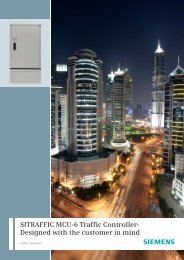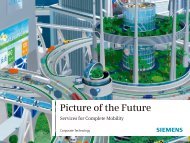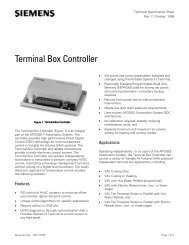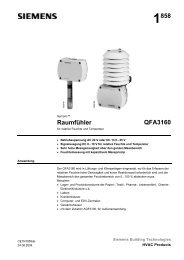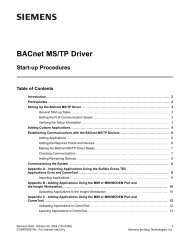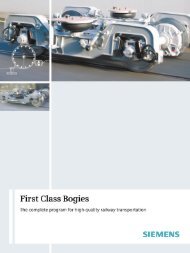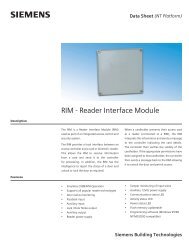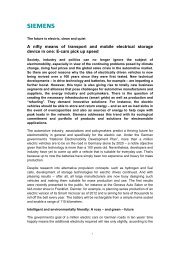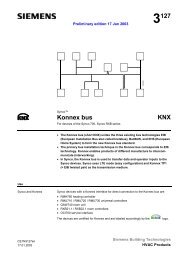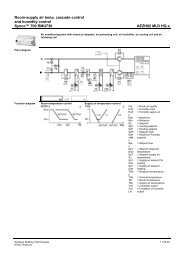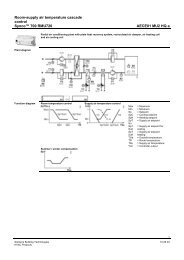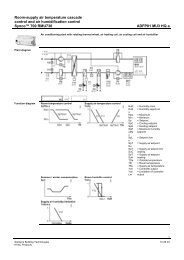UTC System Handbook - Siemens
UTC System Handbook - Siemens
UTC System Handbook - Siemens
Create successful ePaper yourself
Turn your PDF publications into a flip-book with our unique Google optimized e-Paper software.
<strong>System</strong> <strong>Handbook</strong> for an STC <strong>UTC</strong> <strong>System</strong> 666/HE/16940/000<br />
returned by the controller after it has changed to this mode, otherwise the<br />
G1 and G2 bits should be returned simultaneously.<br />
(13) Extension Permit - EP<br />
7.1.3 Junction Reply Bits<br />
The "EP" control bit is sent to a junction configured with this bit to allow<br />
the extension of a stage to service bus priority<br />
(1) Stage Reply Bits - Gn<br />
The "G" reply bits indicate to the <strong>System</strong> which stage is running. Normally<br />
the bit appears when the last phase is operating and clears when the first<br />
phase enters its intergreen.<br />
The "G" bits are used to verify that the controller is correctly responding to<br />
control from the "F" bits, see sections 7.1.2(1) and 7.13.<br />
If both "GA" and "GB" are present then a 'signals off' fault is reported, see<br />
also section 7.1.3(6).<br />
(2) Stage Demand Confirmation - DRn<br />
Up to two (or eight 11 ) "DRn" reply bits can be used to indicate whether<br />
there is an on-street demand for a particular stage "n". These are used to<br />
ensure that the demand is serviced the next time the controller is given the<br />
opportunity.<br />
(3) Part-time signals confirm - OL<br />
See section 7.1.2(4).<br />
(4) Detector Fault - DF<br />
The Detector fault detection facility in a controller (DFM 12 ) is designed to<br />
indicate the state of controllers' VA 13 detector fault bits. If a failure is<br />
detected then the "DF" reply bit can be set in the OTU's reply word and this<br />
reports that there is a fault with the detectors connected to the controller. If<br />
this bit is present then consideration should be given to using one of the<br />
demand bits, "DX" or "Dn", to minimise the adverse effects, such as nonappearance<br />
of a stage.<br />
(5) Sub-sequence Demand indicator - SD<br />
This facility uses the "SD" reply bit to allow an on-street demand to cause<br />
the <strong>System</strong> to select one of two stage sequences written into the current<br />
fixed time plan 14 . The choice to be made by the <strong>System</strong> is indicated by the<br />
controller setting or clearing the "SD" bit in its reply word. The bit can be<br />
the result of a demand for a particular controller phase or stage, or it might<br />
be the output from a queue logic board or other two state device.<br />
11 See footnote for section 7.1.2(1)<br />
12 DFM - Detector Fault Monitoring<br />
13 VA - Vehicle Actuated<br />
14 Note that Sub-sequences are not available under SCOOT control.<br />
666-HE-16940-000.doc Issue 31 Page 36




